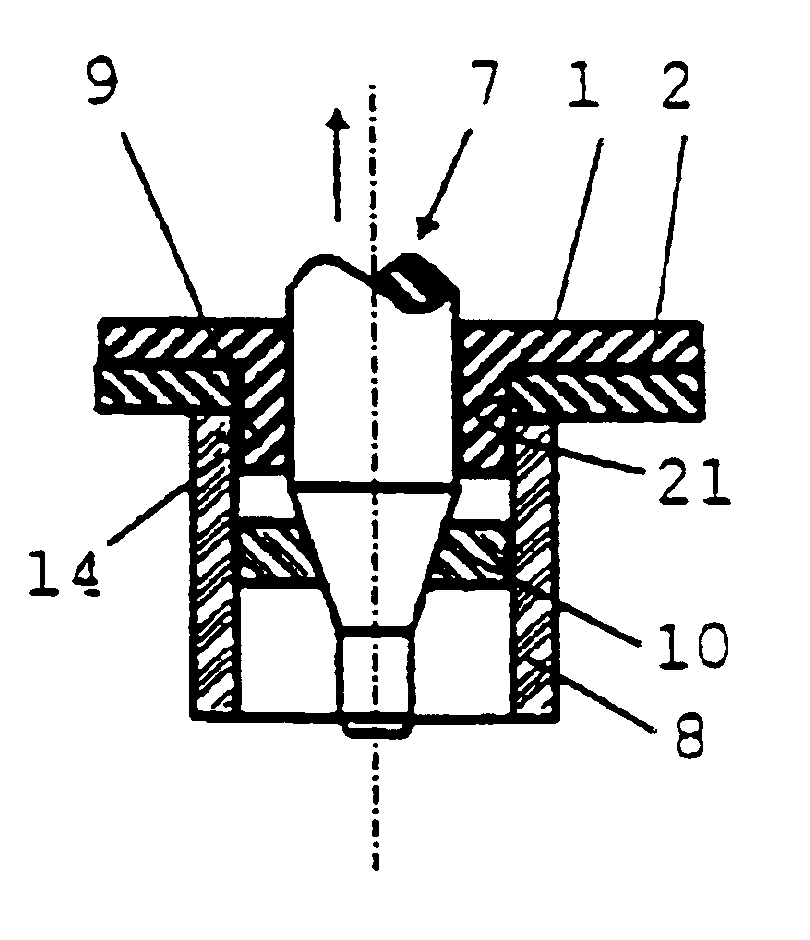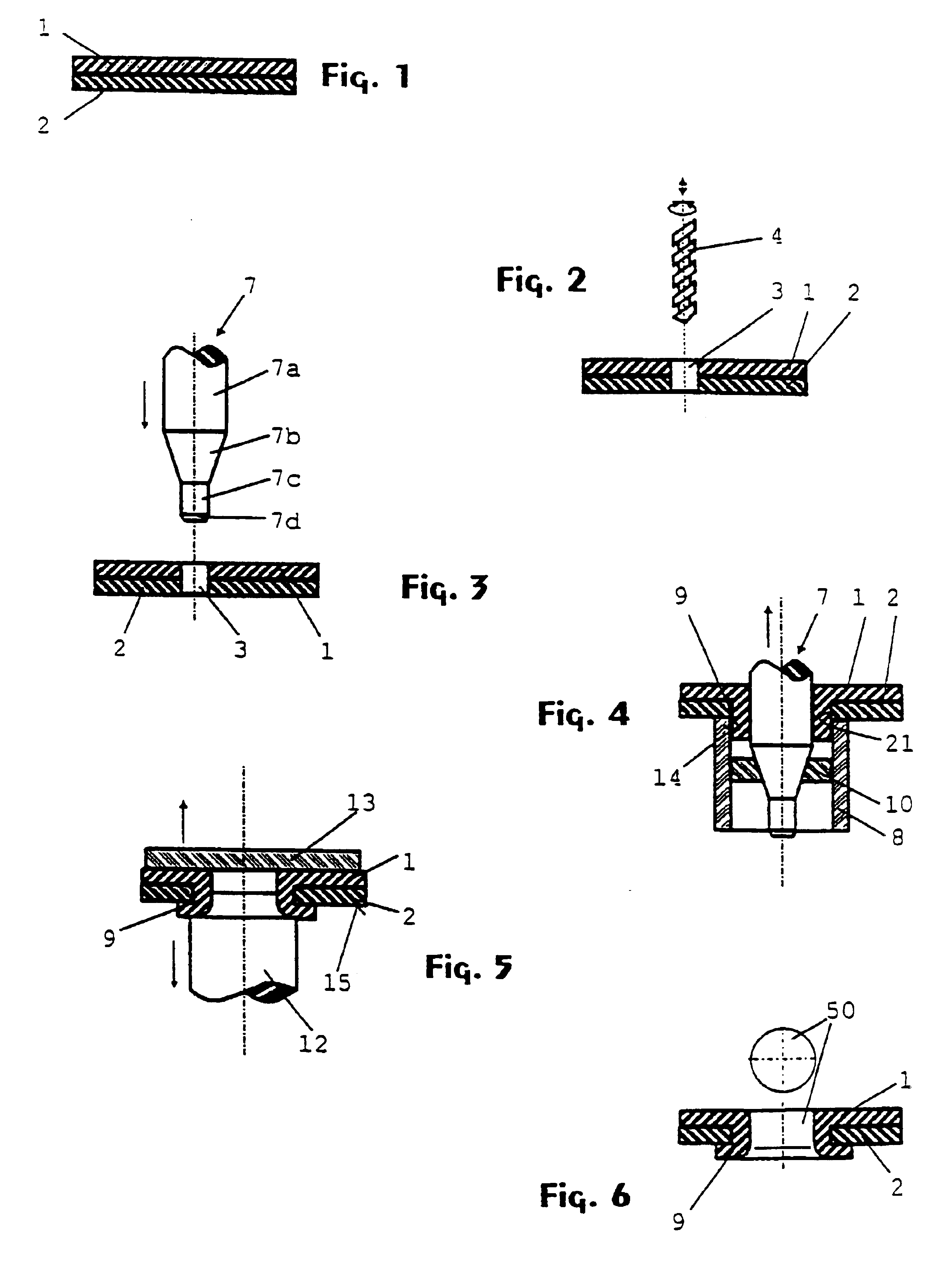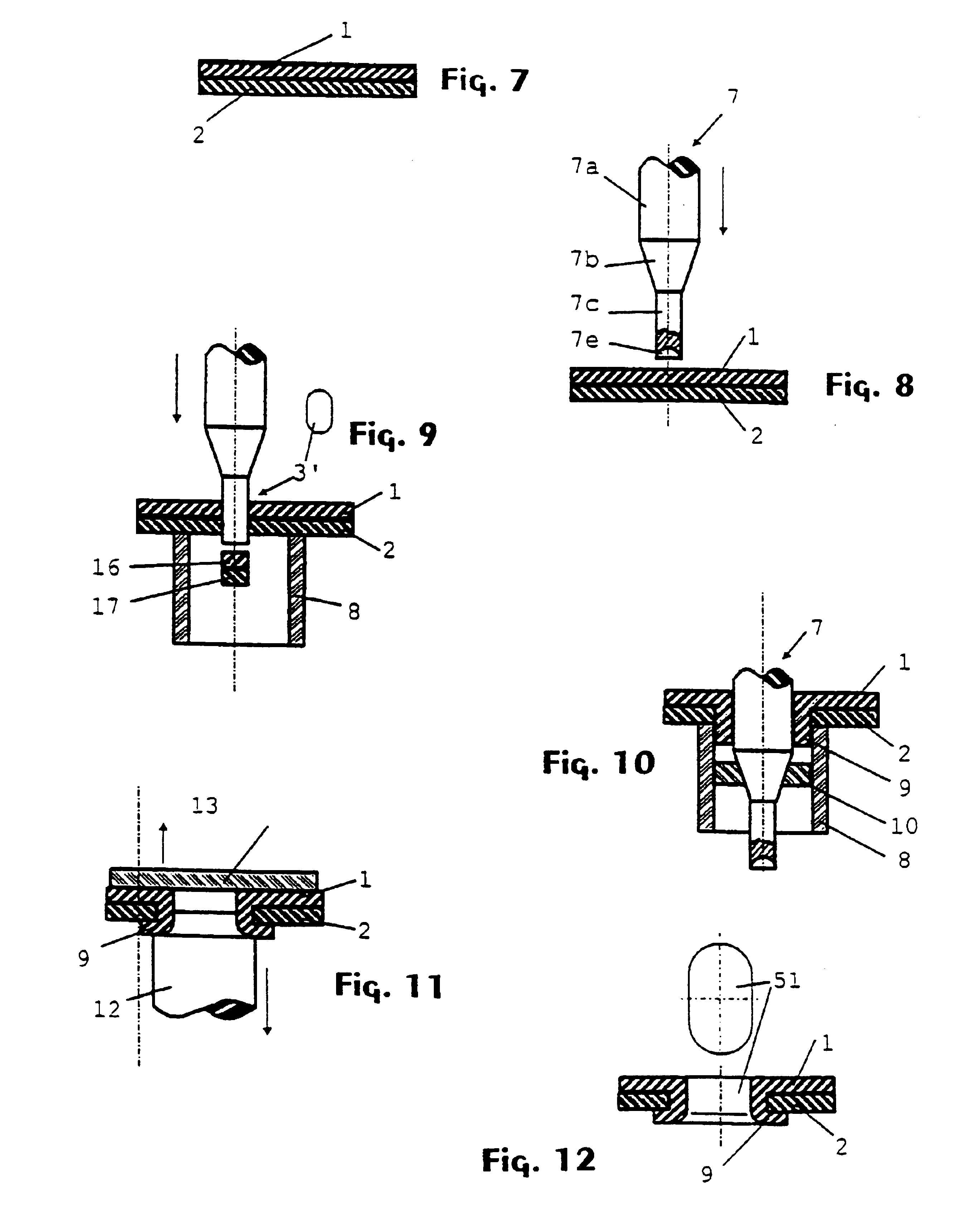Method for producing an eyelet
a technology of eyelets and eyelets, applied in metal-working equipment, metal-working equipment, manufacturing tools, etc., can solve the problems of cumbersome and prone to errors, complicated and cumbersome connection of machined parts or plates, and the need for expensive machinery and trained personnel, so as to simplify the various work steps and make the method more profitable.
- Summary
- Abstract
- Description
- Claims
- Application Information
AI Technical Summary
Benefits of technology
Problems solved by technology
Method used
Image
Examples
first embodiment
[0032]Here below, the first embodiment will be explained on the basis of the schematic FIGS. 1 through 6 showing in each case the workpieces and tools in cross-section.
[0033]FIG. 1 shows plate-shaped workpieces 1 and 2, of different thickness, piled on top of each other and which are to be joined.
[0034]FIG. 2 shows how a penetration drilling 3 through workpieces 1, 2 is accomplished by means of a drill 4 through vertical feed through the pile composed of workpieces 1 and 2. The diameter of the penetration drilling 3 in this embodiment example is constant throughout. Workpieces 1 and 2 are made of steel but can consist, independently from each other, of different metal materials.
[0035]In FIG. 3, the dynamically balanced rim hole punch 7 is shown consisting of several sections 7a, 7b, 7c and 7d and fed through penetration drilling 3. The phase 7d at the front end of the rim hole punch 7 serves for more easily driving the rim hole punch 7 into the penetration drilling 3. The connecting...
second embodiment
[0042]FIG. 7 corresponds to FIG. 1, workpieces 1 and 2 are, nonetheless, made of aluminium in the
[0043]In FIG. 8, a rim hole punch 7 is shown that has been modified contrary to the first embodiment and that is led through workpieces not drilled in this embodiment. Instead of phase 7d, the rim hole punch has a punched section 7e. The punched section 7e produces, during the rim hole punch's (7) feed movement, the penetration opening 3′ in an oblong hole shape. The penetration opening 3′ serves to prevent the accumulation of too much material in the rim hole 9. If too much material is actually in rim hole 9, then the material must flow particularly strongly. This generally results in a breakthrough of the rim hole and in riveted joints with reduced resistance to strains. During feed with rim hole punch 7, workpiece 2 is supported by matrix 8. However, it is also feasible that during production of penetration opening 3′, workpiece 2 is supported by a smaller matrix located inside matrix...
PUM
| Property | Measurement | Unit |
|---|---|---|
| tensile stresses | aaaaa | aaaaa |
| area | aaaaa | aaaaa |
| time | aaaaa | aaaaa |
Abstract
Description
Claims
Application Information
 Login to View More
Login to View More - R&D
- Intellectual Property
- Life Sciences
- Materials
- Tech Scout
- Unparalleled Data Quality
- Higher Quality Content
- 60% Fewer Hallucinations
Browse by: Latest US Patents, China's latest patents, Technical Efficacy Thesaurus, Application Domain, Technology Topic, Popular Technical Reports.
© 2025 PatSnap. All rights reserved.Legal|Privacy policy|Modern Slavery Act Transparency Statement|Sitemap|About US| Contact US: help@patsnap.com



